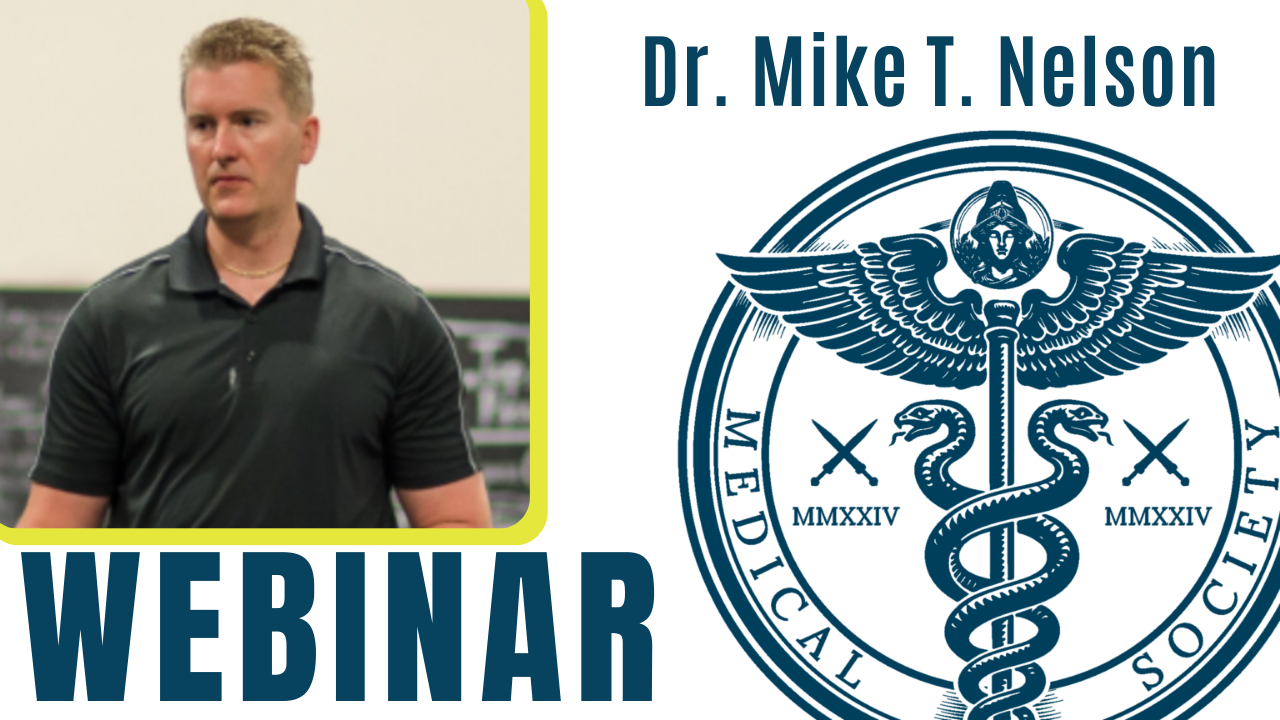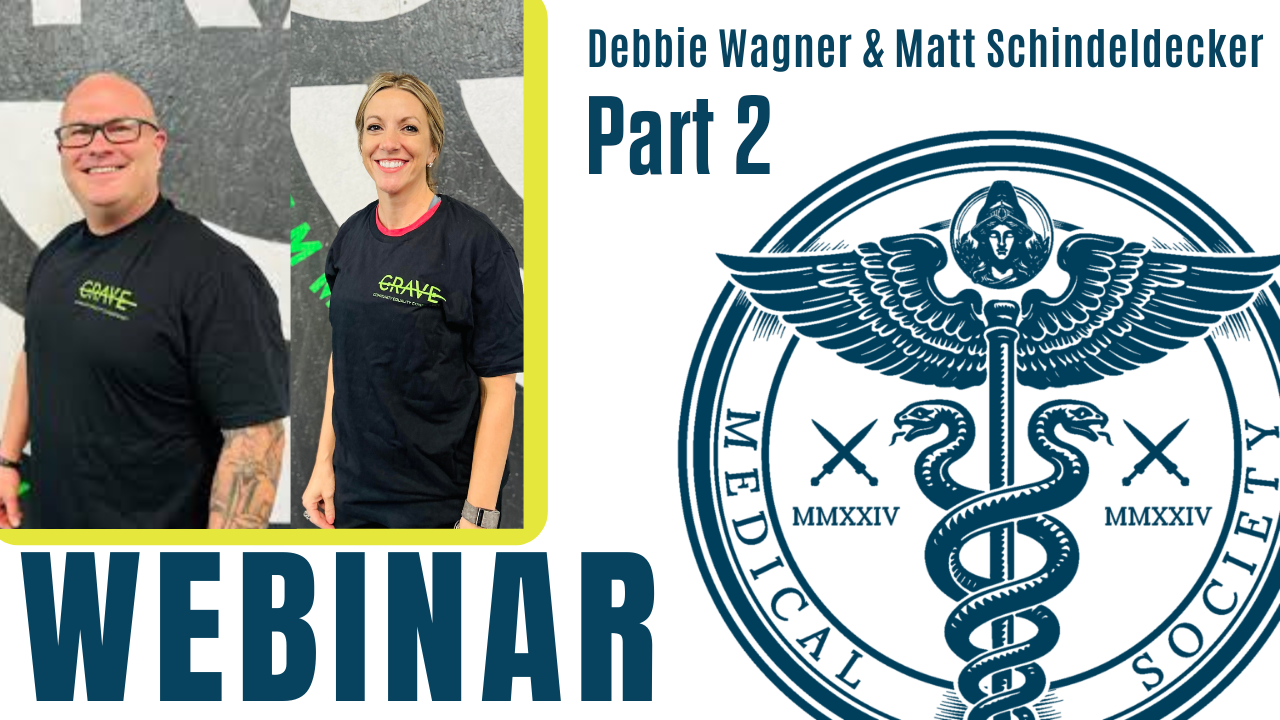By Emily Kaplan
In an era of unprecedented connectivity, social media giants have risen as the new gatekeepers of public discourse, commanding an influence that rivals, if not surpasses, traditional media. Yet as these platforms narrow the scope of acceptable discussion to align with institutions deemed authoritative, we risk more than the stifling of alternative viewpoints. We jeopardize the very progress and evolution of science, medicine, and technology—disciplines that advance not in an echo chamber of agreement, but through a cacophony of diverse voices, rigorous questioning, and informed dissent.
Consider the COVID-19 pandemic: platforms like YouTube have empowered organizations like the World Health Organization (WHO) to be the singular arbiters of truth, with algorithms flagging or removing content that diverges from the WHO’s stance. While the intent may be to combat misinformation, such an approach overlooks the fallibility of these organizations and the historical consequences of their errors—from the WHO’s delayed Ebola response to the FDA’s ill-fated endorsements of drugs like Vioxx and DES.
Now, extend this phenomenon beyond the pandemic. Picture a world where only “approved” voices contribute to the discourses on climate change, artificial intelligence ethics, or even routine healthcare. What we lose is more than just the benefit of a second opinion. We lose the potential for revolutionary breakthroughs and paradigm shifts, often brought forth by outsiders willing to challenge the status quo. We are narrowing the field of human inquiry and, in doing so, limiting our collective capacity to solve the grand challenges of our time.
Just last month, YouTube amplified the clout of the World Health Organization and local health bodies, making them the final arbiters of what constitutes credible health information. It’s worth noting that for a majority of Americans, YouTube serves as a primary news source. This sweeping policy change means that any information diverging from the viewpoints of these selected authorities—be it the WHO, the American Medical Association, or the Academy of Nutrition and Dietetics—is essentially censored, leaving the public exposed to a unilateral narrative on matters of health.
“Moving forward, YouTube will streamline dozens of our existing medical misinformation guidelines to fall under three categories – Prevention, Treatment, and Denial,” the company statement read. “These policies will apply to specific health conditions, treatments, and substances where content contradicts local health authorities or the World Health Organization (WHO).”
YouTube’s policy of deferring to the World Health Organization (WHO) and local health authorities for content moderation may seem, on the surface, like a responsible step to mitigate inaccurate information. But this strategy reflects what can be best described as a frequentist approach to scientific authority—an approach that, ironically, can undermine the very scientific principles it aims to uphold.
Greg Glassman, cofounder of The Broken Science Initiative summed up this paradox: “It’s an anti-science approach, feeding the deductivists’ need for certainty, unable to see the validation of scientific models coming from navigating uncertainty.”
In a frequentist framework, empirical data provides conclusive answers. The approach is deductive, reducing complexities into manageable, binary outcomes—safe or unsafe, effective or ineffective. But as appealing as this clear-cut delineation may be, it lacks the nuance to navigate a landscape as fraught with uncertainty as, say, a global pandemic.
The Paradox of Authority
By leaning into this frequentist model, YouTube’s policy inadvertently muzzles the scientific dialogue necessary to understand evolving crises. When it silences voices that contradict WHO guidelines, YouTube plays into the fallacy that scientific authority can be monolithic and irrefutable. The digital behemoth becomes an enforcer of a presumed ‘absolute truth,’ despite the fact that science thrives not on consensus but on rigorous debate and the challenging of established norms in pursuit of validation.
Uncertainty is not just a byproduct but the lifeblood of scientific inquiry. Bayesian statistics, which offer probabilities instead of absolutes, provide a framework for this sort of uncertainty-friendly dialogue. In Bayesian terms, a guideline or a piece of advice is not a fixed truth but a statement with a certain probability of being true, based on the data currently available. This is science in its most dynamic form, as a quest not for certainty but for understanding, and it reflects the reality that scientific models are validated by their ability to navigate uncertainties.
By arbitrating scientific truths through a frequentist lens, we not only quash the potential for groundbreaking discovery but also foster public mistrust. This form of content moderation becomes not an ally but an adversary to public health, enforcing a rigid framework ill-suited for the fluid, complex realities of scientific progress.
Nothing man made is worthy of godlike authority
The World Health Organization (WHO), though positioned as an impartial authority on global health, is as fallible as any bureaucratic institution staffed by human experts grappling with complex issues. Its treatment of Taiwan is a case in point, revealing political undertones that sharply contradict its purportedly apolitical stance. Before we elevate the WHO to the pedestal of “ultimate authority,” it is imperative to scrutinize its track record.
In the late ’80s and early ’90s, the WHO advised HIV-positive mothers to breastfeed—a policy that subsequently proved disastrous when it was revealed that HIV could be transmitted through breast milk. During the 2009 H1N1 pandemic, the WHO labeled it a ‘pandemic,’ spurring nations to amass vaccines. This decision later faced scrutiny from respected outlets like the British Medical Journal, which argued that the response was a costly overreaction and exposed the WHO’s conflict of interest with pharmaceutical companies. In 2014, the WHO’s sluggish and ineffectual response to the Ebola crisis in West Africa earned widespread censure. Furthermore, its nutritional guidelines have faced ongoing criticism for appearing to be swayed by the food and beverage industry.
These examples predate the COVID-19 era, and yet, the WHO’s influence has not waned; it has intensified. Social media platforms are now compounding this issue by investing unparalleled authority in this flawed institution, creating what could be termed the “danger of the one.”
This consolidation of power is not just problematic—it’s a direct affront to public health.
To assert that these large, bureaucratic bodies—often reflective of the political class’s consensus—are the sole arbiters on matters of public health is perilous. This approach has been exposed repeatedly as fatally flawed, to the point that revisiting the discussion feels almost farcical. Yet, here we are, forced to confront this flawed paradigm once more. The notion that only a singular perspective should shape public discourse on health is not just wrong; it’s a prescription for disaster.
Consider for a moment the medical establishment’s most influential organizations—entities that have made substantial errors, often recognized and rectified only when external, independent voices raise the alarm. These voices—whether they are independent researchers, journalists, or concerned citizens—have historically played a crucial role in identifying inaccuracies, ethical issues, and conflicts of interest. Now, imagine the catastrophic consequences if these independent voices were systematically silenced.
YouTube’s revised August 15, 2023, policy, which pledges allegiance to organizations like the American Medical Association and the World Health Organization, exemplifies this alarming trend towards informational control. Under this policy, content falling outside the officially sanctioned guidelines—what they deem as the ‘standard of care’—will be effectively expunged from the platform. This is a dire restriction of intellectual diversity, one that disqualifies contributions from thought leaders and dissenting experts alike. Visionary figures such as Thomas Seyfried, Dr. Malcolm Kendrick, Zoe Harcombe, and Gary Taubes, along with thousands of other medical professionals, researchers, and concerned citizens who dare to challenge conventional wisdom, find their avenues for sharing research and hypotheses severely curtailed on the world’s most extensive “news” platform.
This isn’t just a policy change; it’s an act that undermines the very foundation of informed discourse and scientific inquiry. By enforcing such stringent control over what can and cannot be discussed, we are setting ourselves up for a monumental failure in the way we understand and respond to health issues. In silencing dissent and alternative hypotheses, we not only stifle innovation but also jeopardize the very integrity of medical science. The impact is nothing short of disastrous, and this isn’t a calamity isolated to the digital realm or global health organizations. It’s reflective of a broader issue that penetrates the very fabric of American institutions that are equally entrusted with the public’s welfare yet have shown their own share of fallibility.
A rich history of deadly mistakes
American institutions are no strangers to the pitfalls of being the sole oracles of truth. Take the American Medical Association, a body of distinguished credentials and gravitas. Its recommendations have steered public health discourse, from opioids to hormone replacement therapies – and been wrong on both counts. The AMA’s authority did not prevent it from making decisions that had to be reversed later, sometimes at the cost of public health and in most cases because of independent voices outside the organization.
The Academy of Nutrition and Dietetics—once the zealous champions of low-fat diets as the pinnacle of heart health—has also had to retreat and modify its guidance. New research unveiled the health benefits of certain fats, putting avocado and olive oil back on the menu. This was a reminder that dogmas, even scientific ones, often crumble under the weight of fresh inquiry.
Then there’s the Food and Drug Administration, our protector against harmful substances, our guard at the gate. Treatments like Vioxx, Thalidomide, Avandia, Fen-Phen, Ketek, Essure, Oxycontin, Aduhelm and many more were once stamped with the FDA’s seal of approval, only for later evidence to reveal significant harm to patients. [Read more about the historic errors and warnings we should heed from historical examples of the FDA’s failings and how citizens, researchers and journalists forced change in this piece: TK]
The Centers for Disease Control and Prevention, our frontline defense agency, has been no less guilty of contributing to public confusion by spreading inaccurate information. Let us not forget its handling of Legionnaires’ Disease (1976), Chronic Fatigue Syndrome Guidelines (1990), Lead Poisoning Guidelines (2000), Anthrax Scare (2001), H1N1 Vaccine distribution (2009), opioid guidelines (2016), Covid testing kits (2020), Covid Aerosol Transmission guidelines (2020), At the onset of COVID-19, it initially advised against masks for the general public—a decision that would later be reversed, sowing discord and mistrust among citizens, .
In every one of these instances, it was a polyphony of voices, a cacophony of dissenting opinions, that led us closer to the truth. These were the checks and balances in the ecosystem of public knowledge, the antidotes to institutional hubris. It was the researcher challenging the status quo, the journalist asking uncomfortable questions, the citizen refusing to be patronized. It was this collective scrutiny that corrected the course of public opinion and, by extension, policy.
If we let social media platforms dictate a singular “true” narrative by deferring solely to institutions like the WHO or the FDA, we risk muting the multitude of voices essential for scientific honesty and advancement. As history shows us, the path to truth isn’t straight or narrow, but a wide field in which many voices must be free to roam. Freedom of speech is what enables our collective intellect to evolve. And, in a world of uncertainties and invisible threats, that evolution is not just desirable—it’s imperative.
When scientific dialogue is narrowed down to a monotone, the richness of human inquiry is stifled, boxed into a sterile echo chamber that resists progress. What’s lost in this constriction isn’t merely the freedom to voice dissent; it’s the loss of a fertile ground in which new ideas are seeded, nurtured, and brought to bloom. Science is inherently a discipline of question marks, a ceaseless probing into the unknown, and it thrives in an environment where assumptions can be audaciously challenged.
Consider germ theory which supplanted the prevailing miasma theory in the late 19th century. If the scientific discourse of the time had been monopolized by the staunch believers in miasma, the germ theory—introduced by voices like Louis Pasteur and Robert Koch—might have been silenced or delayed. And with it, countless medical advances—from vaccines to antibiotics—could have been deferred, costing untold lives.
Pasteur knew that in order to shift the conventional wisdom he needed the public’s buy-in. He designed a public stunt intended to grab the interest of the common people as much, or perhaps even more, than the scientific community in an effort to push his discovery forward–much like many health, fitness and medical YouTubers might. Pasteur held his anthrax vaccine trial in Pouilly-le-Fort in 1881. He didn’t just invite scientists to this event; local farmers and the media were also in attendance. Pasteur took a gamble: he inoculated 25 sheep with his anthrax vaccine and left another 25 sheep untreated. After exposing both groups to anthrax, only the vaccinated sheep survived. His work on germ theory followed the same playbook, he held public lectures, and wrote for newspapers, always conscious to use language that the lay person could understand.
This wasn’t just about science; it was about mobilizing a broad swath of society to recognize and act upon a new understanding of disease. It offers a playbook for how to turn scientific consensus into public action, a lesson that remains profoundly relevant today. If a scientist did such a thing on YouTube today, it would never see the light of day. It would be labeled misinformation, slapped with a community standards violation, and we’d all be left in the dark.
Or ponder the tale of Barry Marshall, the Australian physician who hypothesized that ulcers were caused by bacteria, an idea that was anathema to a medical community wedded to the belief that stress and lifestyle were the culprits. When editorial boards, peer reviewers, and academic hierarchies act as gatekeepers with a singular vision, outliers like Marshall face towering barriers. Yet it was Marshall’s rebellious voice that eventually shifted our understanding and treatment of stomach ulcers, earning him a Nobel Prize in Medicine.
Controlling the story erodes progress
Let’s be clear: not every contrarian voice will birth a paradigm shift, and not every claim outside the mainstream deserves credence. But the filtering process should happen in the open meadows of collective scrutiny, not in the walled gardens tended by a select few. Peer review, public debate, and journalistic inquiry are the traditional referees in this contest of ideas, but their whistles should not be the only ones we hear.
Imagine, then, a social media landscape where only the approved voices are amplified, where the Barry Marshalls and the Robert Kochs are silenced in deference to a prevailing narrative. That’s a garden where nothing new grows—a flat, monochrome painting that calls itself a world.
Modern medical problems are kaleidoscopic complexity that no single voice, however authoritative, can hope to solve. When we clear the stage for a singular narrative, we risk not just the suppression of dissent, but the forfeiture of opportunities for breakthroughs and new understandings.
In a world where data is abundant, but wisdom is increasingly rare, we cannot afford to narrow our channels of information. In our digital age, social media platforms have ascended as the new arbiters of information, capable of reaching billions in mere seconds. But with this immense power comes a crucial responsibility, one that these platforms seem to struggle with. While social media can democratize information by giving a voice to the previously voiceless, they also tend to disproportionately amplify authoritative voices, often at the expense of dissenting perspectives. Algorithms prioritize content from ‘verified’ or ‘official’ sources, which means that non-mainstream viewpoints find it harder to gain traction. These systems, designed to mitigate the spread of misinformation, inadvertently silence the independent voices that have historically served as critical counterpoints to institutional authority.
The exclusion of a chorus of voices isn’t merely an academic concern; it’s a pressing public health issue. If we permit social media platforms to become the final word on matters of significant public interest, we risk creating an information ecosystem where mistakes go unchallenged, and authority remains unaccountable. Given the profound impact that information can have on public behavior and belief, we cannot afford to ignore the lessons of the past. In matters of public health, and indeed in all matters of public interest, it is not just desirable but essential to maintain a polyphony of perspectives. Only through such openness can we hope to approach the truth, correct mistakes, and protect public well-being.
Emily Kaplan is an expert in strategy and communication. As the CEO and Co-founder of The Broken Science Initiative, she is building a platform to educate people on the systemic failings in science, education and health while offering an alternative approach based in probability theory. As the principal at The Kleio Group, Emily works with high profile companies, celebrities, entrepreneurs, politicians and scientists who face strategic communication challenges or find themselves in a crisis.
Emily’s work as a business leader includes time spent working with large Arab conglomerates in the GCC region of the Middle East looking to partner with American interests. Emily acquired Prep Cosmetics, expanded it to become a national chain and revolutionized the way women bought beauty products by offering novel online shopping experiences, which are now the industry standard. She was a partner in a dating app that used the new technology of geolocation to help interested parties meet up in real life. Emily developed Prime Fitness and Nutrition, a women’s health concept that focused on the fitness and diet needs of women as they age, with three physical locations. She was the host of the Empowered Health Podcast, and wrote a column in Boston Magazine by the same name, both of which focused on sex differences in medicine.
Emily is an award winning journalist who has written for national newspapers, magazines and produced for ABC News’ 20/20, Primetime and Good Morning America. She is the author of two business advice books published by HarperCollins Leadership. Emily studied Advanced Negotiation and Mediation at Harvard Law School. She has a Masters of Science from Northwestern University and received a BA in history and psychology from Smith College.
Support the Broken Science Initiative.
Subscribe today →
One Comment
Leave A Comment
You must be logged in to post a comment.
recent posts
Metabolic Flexibility to Burn Fat, Get Stronger, and Get Healthier
Expanding Horizons: Physical and Mental Rehabilitation for Juveniles in Ohio




Perhaps the worst part is, this is all being done because it is not believed that people are capable of understanding discourse. That we need to be protected. It’s exactly how we came to have the current dietary guidelines. “Control the narrative” is evolving into “Silence your opponents.”